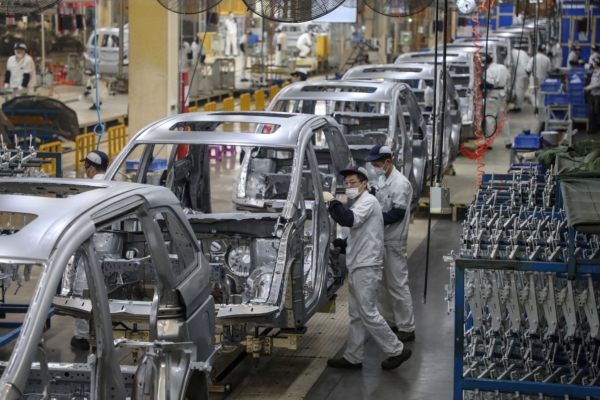On Monday, September 9, several Japanese media outlets reported that Honda Motor Co., Ltd. will reduce the number of employees in its joint ventures with Dongfeng Motor Group in China. This marks Honda’s second round of workforce reductions in its Chinese joint ventures.
One of Honda’s joint ventures in China, Dongfeng Honda Automobile, started seeking voluntary early retirement from employees at the end of August. The activity concluded earlier this month, although the exact number of affected employees has not been disclosed. The voluntary retirement program applies to production line workers at three major fuel vehicle factories.
Honda has been experiencing a decline in new car sales in the Chinese market, with another joint venture, GAC Honda Automobile, seeking voluntary retirements in May. GAC Honda is a joint venture with China’s state-owned automaker Guangzhou Automobile Group. Approximately 1,700 employees, accounting for 14% of the workforce, have agreed to early retirement.
According to Nikkei Asia, Honda had originally planned to reduce its workforce in China by around 3,000 employees by the end of the fiscal year ending in March, including voluntary and natural reductions at GAC Honda. However, Dongfeng Honda’s layoffs were not initially included in the reduction plan, suggesting that Honda’s downsizing scope in China could be more extensive.
On July 25, Honda announced that due to sales challenges, it would cut annual production capacity by around 290,000 gasoline cars in China, marking the first capacity reduction by Honda in China. A spokesperson for Honda mentioned that production lines with GAC and Dongfeng joint ventures will be halted separately in October and November, with Dongfeng’s plant producing 240,000 vehicles annually.
Prior to the reports in Japanese media, mainland Chinese outlets indicated recent rumors within the industry that Dongfeng Honda is facing a strategic adjustment and planning a significant layoff operation affecting an estimated 2,000 employees. The layoff compensation scheme follows a “N+2+1” model, leading to a situation where employees are queuing to “compete” for redundancy quotas.
In an announcement on September 10, Dongfeng Honda’s official blog stated that the current personnel optimization was a phased adjustment in line with the company’s strategic transformation.
In the Chinese market, the growing demand for new energy vehicles such as electric cars has led to a downturn in sales for Japanese automakers. In August, Honda’s new car sales in China dropped by 44% year-on-year, marking seven consecutive months of decline compared to the same period last year.
Foreign car manufacturers are facing intense challenges in China due to cutthroat competition and policy subsidies from the Chinese authorities. According to data from the China Passenger Car Market Information Joint Conference, foreign automakers’ market share in China’s automotive market dropped from 53% two years ago to 33% in July.

